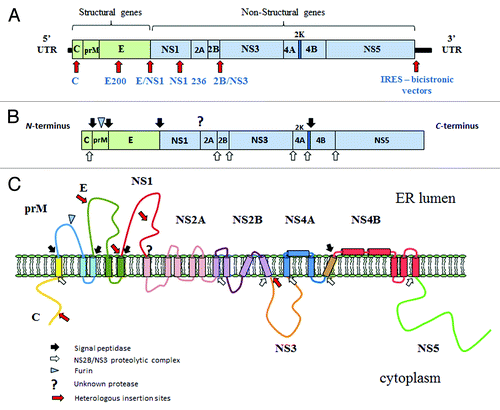Figures & data
Figure 1. Insertion of heterologous sequences into the YF 17D genome. (A) YF genome is composed of a single positive single-stranded RNA containing 10 862 nucleotides. The major portion of the genome consists of an open reading frame flanked by a 5` and 3` untranslated region. The heterologous sequence insertion sites that have been described so far for recovering recombinant YF virus are indicated by a red arrow; (B) The translation of this large ORF produces a precursor polyprotein of 3411 amino acid residues, which are mainly co- and post-translationally processed at specific sites by the viral NS2B-NS3 proteolytic complex (white arrows) and signal peptidase (black arrows) producing the virion (structural proteins) and replicase elements (non-structural proteins). (C) Topological arrangement of YF proteins and the regions in which were possible to express heterologous sequences, indicated by red arrows. On the cytoplasmatic side, the viral proteins are processed by the viral NS2B/NS3 proteolytic complex (white arrows) whereas on the ER side by signal peptidases, furin, and an unknown protease that cleaves the carboxi-terminus of NS1.

